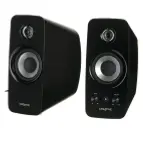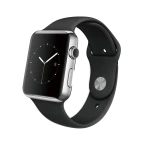- 1 YearApple PK Warranty
- PTA ApprovedMobiles
- Packaging VideoSee Your Product
- Fast Delivery All Over Pakistan
Specifications
- 5.5 inchesDisplay
- 3 GBRAM
- 290011.1 mAhBattery
- 12 MPBack Camera
| General Features | |
|---|---|
| Release Date | 01 Jan 2016 |
| SIM Support | Nano-SIM |
| Phone Dimensions | 158.2 x 77.9 x 7.3 mm |
| Phone Weight | 188 g |
| Operating System | iOS 10.01 upgradable to IOS 10.02 |
| Display | |
|---|---|
| Screen Size | 5.5 inches |
| Screen Resolution | 1080 x 1920 pixels |
| Screen Type | LED-backlit IPS LCD, capacitive touchscreen, 16M colors, Multitouch |
| Screen Protection | Ion-strengthened glass, oleophobic coating |
| Memory | |
|---|---|
| Internal Memory | 32/128/256 GB |
| RAM | 3 GB |
| Card Slot | No |
| Performance | |
|---|---|
| Processor | Apple A10 Fusion |
| GPU | PowerVR Series7XT Plus (six-core graphics) |
| Battery | |
|---|---|
| Type | Non-removable Li-Ion 2900 mAh battery (11.1 Wh) |
| Camera | |
|---|---|
| Front Camera | 7 MP |
| Front Flash Light | No |
| Front Video Recording | 1080p@30fps |
| Back Flash Light | Yes |
| Back Camera | 12 MP |
| Back Video Recording | 2160p@30fps, 1080p@30/60/120fps, 720p@240fps |
| Connectivity | |
|---|---|
| Bluetooth | Yes |
| 3G | Yes |
| 4G/LTE | Yes |
| 5G | null |
| Radio | No |
| WiFi | Yes |
| NFC | Yes |
Highlights
One of the most anticipated releases of 2016 is upon us. Apple has finally unveiled its latest and greatest invention in the form of the iPhone 7 and iPhone 7 Plus. While the iPhone 7 did receive its fair share of plaudits and criticism, the iPhone 7 Plus was on the receiving end of a comparatively positive feedback among the masses. Why? Let’s find out.
Build quality and display
The iPhone 7 Plus was subject to a lot rumors in the last 5 months or so. Many credible sources quoted new theories only to later reject them or improve them with newer ones. Some of the most talked about theories about the iPhone 7 Plus involved its color scheme. It was previously thought that the space grey color will now make way for a deep blue color scheme. This theory has proven to be 50% true because Apple has indeed said goodbye to the space grey color but instead will see it replaced by two new color schemes; the jet black and the space black.
The jet black color scheme will only come in with the iPhone 7 Plus’s 128 and 256GB internal storage variants. This new exterior features a chrome-metallic kind material that is superb to look at. Its glossiness further adds to its beauty and the Apple monogram on its back panel will now be made of a shiny chrome-like material that proves to be the icing on the cake. Regarding its build quality, we’re not sure as to what exactly has been used but we’re confident it is something similar in the mold of the aluminum 7000 series used in the iPhone 6S Plus.
The iPhone 7 Plus is sleek as it is 7.3mm at its thickest. It features for the very first time in an iPhone, IP67 dust and waterproofing. This is excellent news as it keeps the iPhone in contention with the very best out there and gets the no-waterproofing monkey off its back.
Its display features similar specifications to the iPhone 6S Plus with a 5.5 inch backlit-LED IPS LCD capacitive touchscreen with 401ppi pixel density protected by ion-strengthened glass and oleophobic coating. It allows 1080p resolution which is good to hear although we believe that the 500+ pixel densities in the Super AMOLEDs of the Note7 and S7 would perform visibly better than this. Its display is said to be 25% brighter than the iPhone 6S and it includes 3D-Touch technology and a wide color gamut. We would’ve liked Apple to decrease the size of the bezels though as the screen covers just 67% area of the iPhone 7 Plus’s front panel. It also weighs in at 188g which is a tad more for a 7.3mm smartphone.
Cameras
The iPhone 7 Plus’s primary camera was also the subject of much thought and head-scratching in the last 5 months or so. The most credible of sources, however, were united in this concept that the iPhone 7 Plus would feature a dual-lens camera and there we have it. The iPhone 7 Plus does indeed feature a 12 megapixel dual-lens lens primary camera with a Quad-tone LED flash which produces 50% more light than the iPhone 6S, optical image stabilization and phase detection auto-focus which are extremely credible features.
Dual-lens sensors are always subject to much querying as people are very anxious to know what the two sensors are about. In the case of the iPhone 7 Plus, one of the sensors is a wide angle sensor while the other is called a telephoto sensor. The wide angle lens is capable of including a wider area into our pictures while the telephoto sensor is about adding more functionality to your cameras. The primary camera lenses are also aided by an image signal processor (something Huawei has made use of in the P9 Plus) whose job is to further add power to any image you take from your camera.
It helps in image color rendering, correct angels and render low-light colors via a supreme machine learning algorithm that looks for objects in your photos and places them on a different layer compared to other non-focused stuff. This in-turn makes pictures even smarter and better than before by focusing more on the necessary objects in your photos.
The telephoto sensor's primary work is to create the sneak peek effect; an effect Apple describes as when you take a photo, the telephoto sensor creates a depth map of that picture and places the objects you've focused on a separate layer. Then, it applies blurring to the rest of the photo which brings you with a focused image. This seems like sugar-coated stuff as we've seen other cameras do that too but Apple says that the telephoto sensor brings rapid real time blurring which allows you to efficiently adjust and take the photos you want.
Both the sensors work in tandem to produce excellent results but if you like, you can choose to work with the telephoto sensor alone by going in the portrait mode of your iPhone 7 Plus’s camera app. Speaking of camera app, the dual-lens technology allows the iPhone 7 Plus to allow 10x zoom which is 4 times more than the iPhone 6S. Other than that, these new improvements in the iPhone 7 Plus allow it to snap 60% faster than the iPhone 6S and also work with more detail in your photos.
Software and hardware
During Apple’s unveiling event, Phil Schiller talked about performance after he was done with everything else and he started his speech on it by saying that it could’ve easily been mentioned earlier. We’re 100% in agreement with this as Apple and performance is a match made in heaven. The iPhone 7 Plus is another supreme example of what Apple is capable of under the hood.
The iPhone 7 Plus features a 2.23 GHz Quad-Core processor with 2GB of RAM. Two of the cores in the iPhone 7 Plus’s processors are high performance cores while the other two are called high efficiency cores. The latter of the two works on 1/5th of the power of the former and both sets of cores are used for processes that require different intensities. That is why this new set of cores makes for an efficient power unit that works according to the needs of the smartphone leading it to provide more battery life and saving its own resources. Apple says that the new iPhone provides 2 hours more battery life compared to the iPhone 6S.
The 2GB RAM might not seem competitive for a flagship. We certainly agree to that and we expected at least 3GB worth of RAM but the supreme software/hardware optimizations of the iPhone 7 Plus and the new iOS 10 make this an ample quantity.
That’s enough about the cores. Now we’ll talk about some other hardware changes the iPhone 7 Plus has brought with it. This includes a pressure sensitive home button; no longer a mechanical one and this is splendid as you won’t need to worry about the home button getting messed up with time. Secondly, we’d like to announce that the iPhone 7 Plus comes in with dual stereo speakers. This was also subject to many yes and no’s but they’re finally here. The two stereo speakers are situated at the top and bottom of the smartphone which promise 50% more volume than the iPhone 6S.
The headphone jack is also a major absentee in the new iPhone. Just like the antenna bands, this was something which sparked much anger among fans when the rumor first came out. Now officially, the headphone jack is gone and will be replaced by EarPods that will be connected to the iPhone via the lightening connector. That means no more charging and listening to songs at the same time. Though the new iPhones come in with new EarPods, they’ll also come in with a jack to lightening convertor which you can use to ensure that the iPhone can keep on connecting with other devices that make use of jacks and also allow you to keep on using your old EarPods if you wish to do so.
Finally, we’ll reflect on when you should buy the iPhone 7 Plus and its expected prices in our country. The iPhone 7 Plus will begin official shipments to the world come September 16th. This means that it could take even longer than the end of October for the iPhone 7 Plus to reach Pakistan. We expect its price to begin in excess of 120,000 rupees on its countrywide launch which is a very expensive amount for any smartphone.
iPhone’s prices do stay stagnant for longer periods compared to Samsung which is both good and bad news. We expect its price to plateau at 85,000+rupees after 5-6 months of its launch in Pakistan so that will be the more rational time to go for it. Also, if you want the jet black color in the iPhone 7 Plus, you’ll have to splash an extra 10,000 rupees to get at is it will only be offered on the 128 and 256GB models of both the iPhone 7 and iPhone 7 Plus.




























































































